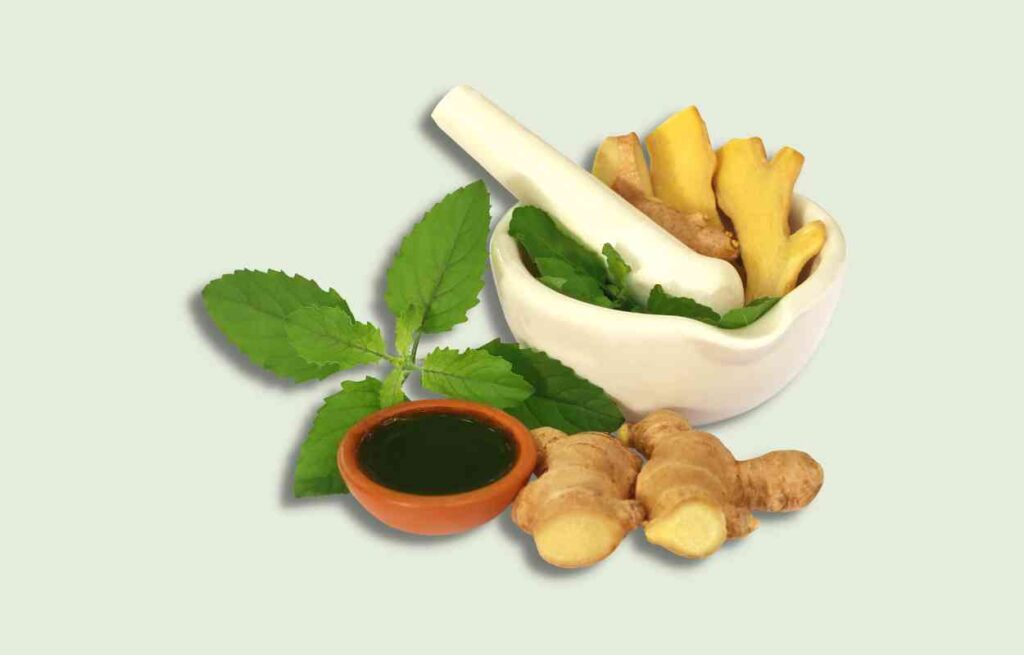Why Does Ginger Turn Green When Frozen?
Ginger, a versatile and aromatic root prized for its flavor and health benefits, can sometimes surprise us with an unexpected transformation when frozen. Have you ever wondered why does ginger turn green when frozen?
Why Does Ginger Turn Green When Frozen? Freezing ginger can stimulate the release of enzymes that react with ginger’s natural sugars, resulting in the production of a green pigment. Additionally, when ginger is frozen, it can turn green due to the loss of acidity during freezing, which triggers the oxidation of anthocyanins, the pigments responsible for ginger’s red or pink color, turning them blue or green.
Although the green color may appear visually unappealing, it does not indicate any harmful effects or spoilage. Proper freezing techniques, such as avoiding pre-washing, cutting into smaller pieces, and using airtight containers, can help minimize the chances of ginger turning green when frozen.

Why Does Ginger Turn Green When Frozen?
When ginger is exposed to frigid temperatures, it undergoes fascinating changes, including a color change to green. This change can be attributed to several factors.
Initially, the freezing procedure can reduce the acidity of ginger, resulting in the oxidation of anthocyanins. These anthocyanins are responsible for ginger’s brilliant red or pink hue. Due to oxidation, the anthocyanins may turn blue or green, altering the aspect of the ginger.
Second, chilling ginger can induce the root’s enzymes to be released. These enzymes can interact with ginger’s natural carbohydrates to stimulate the formation of a green pigment. This enzymatic reaction is precipitated by the frigid temperature, causing the ginger to turn green.
It is essential to observe that the presence of green ginger in frozen form does not necessarily indicate harmful or unsafe properties. Although the change in appearance may appear peculiar, ginger remains safe for consumption.
Is Green Ginger Poisonous?
No, green ginger is not poisonous. The green color of ginger is a result of chemical reactions that occur when ginger is frozen or cooked. These reactions do not make the ginger unsafe to consume.
While the green color may be visually unappealing, it does not indicate any toxicity or health risks. As long as the ginger is fresh, firm, and does not exhibit mold or a strong unpleasant odor, it can still be safely used in culinary preparations.
How Can You Tell If Frozen Ginger Is Still Good?
Determining if frozen ginger is still good requires a few simple observations.
Start by examining its texture. Well, frozen ginger should remain firm and not become soft or mushy.
Next, consider its aroma. Fresh frozen ginger should have a bright and refreshing smell, devoid of any sour or unpleasant odors. If the texture is mushy or the smell is off, it is advisable to discard the ginger.
However, slight freezer burn may not necessarily render it inedible; it may simply affect the taste and quality.
Ultimately, trust your senses and use your judgment to decide if the frozen ginger is still suitable for your culinary needs.
How Long Can You Freeze Ginger?
It is recommended to freeze ginger for three months. You can use frozen ginger within three months for the best taste and texture. While frozen ginger can still be safe to consume beyond this timeframe, its quality may gradually deteriorate over time.
Freezing ginger can help preserve its freshness and extend its shelf life. Proper storage is crucial to maintain its optimal condition. Ensure the ginger is thoroughly cleaned and dried before freezing.
It is advisable to cut it into smaller pieces, which enables faster freezing and easier portioning when needed. Store the ginger in an airtight container or freezer bag to prevent freezer burn and moisture absorption.
Regularly checking the freezer temperature and maintaining it at or below 0°F (-18°C) will help preserve the ginger’s quality for a longer duration.
How to Prevent Ginger from Turning Green?
To prevent ginger from turning green, certain measures can be taken. First, avoid washing the ginger before freezing or cooking, as this can cause the loss of its natural oils and flavors. Instead, clean the ginger thoroughly before freezing or cooking.
Additionally, cutting the ginger into smaller pieces before freezing can help accelerate the freezing process and minimize the risk of freezer burn.
When freezing ginger, make sure it is in a container or freezer bag that keeps air out. This keeps the ginger from absorbing moisture and turning green, which can happen when it oxidizes. It is also a good idea to name the container and write the date on it so that it is easy to find.
When making ginger, it’s important not to cook it too much because too much heat can cause enzymes to react and turn the ginger green. Adding a small amount of acid to the ginger before cooking, like vinegar or lemon juice, can help stop it from turning brown and keep its original color.
Ginger can also keep its moisture by being cooked in a small amount of oil. This keeps it from drying out and going green.
Why Is My Ginger Paste Turning Green?
The phenomenon of ginger paste turning green is often attributed to the presence of water. Water can trigger oxidation reactions in ginger, leading to a green color.
To prevent this, it is recommended to avoid using water when making ginger paste and instead opt for oil or vinegar as a base.
By using alternative liquids, you can preserve the natural color of the ginger paste and prevent it from turning green.
Why Ginger Turns Green When Cooked?
When ginger is cooked, it can sometimes undergo a peculiar color change, turning green. This transformation occurs due to a chemical reaction between the heat and the natural enzymes present in ginger.
These enzymes can interact with the heat and cause the ginger to develop a green color. It’s important to note that this color change does not indicate any harmful effects or spoilage. While the green appearance may be visually unappealing, ginger remains safe for consumption.
To prevent ginger from turning green when cooked, it is advisable not to overcook it, as prolonged exposure to heat can exacerbate the enzymatic reaction. Adding a small amount of acid, such as vinegar or lemon juice, to the ginger before cooking can help inhibit the reaction and preserve the natural color.
Cooking the ginger in a small amount of oil can also help retain its moisture and prevent it from drying out and turning green.
Conclusion
Finally, the freezing temperatures start chemical reactions and enzymatic processes that make ginger turn green when it is frozen. The green color comes from the loss of acidity, the breakdown of anthocyanin, and the interaction of enzymes with natural sugars. Even though it looks bad, green ginger is safe to eat and does not mean it is poisonous or going bad.
